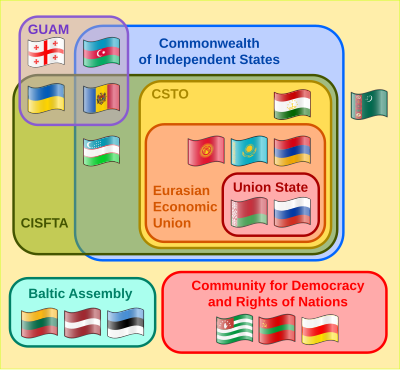Context
-
Kazakhstan’s President has called in the Collective Security Treaty Organisation (CSTO) to help quell protests over the hike in fuel prices in the country.
-
The oil-rich country of 19 million people has seen mass unrest in the opening days of the new year over the government’s decision to end subsidies on liquefied petroleum gas.
What is the Collective Security Treaty Organisation?
- When the Cold War drew to a close in 1991, the Warsaw Pact, an alliance of eight socialist states, and the Soviet Union’s answer to NATO, dissolved.
- Less than a year later, Russia and five of its allies in the Commonwealth of Independent States, which was nothing but a loose club of post-Soviet countries, signed a new Collective Security Treaty, which came into force in 1994.
- Although it wasn’t as powerful as the Warsaw pact, in 2002, as Central Asia loomed larger in geopolitics — America had invaded Afghanistan the previous year — it declared itself the Collective Security Treaty Organisation, a full-blown military alliance.
- Today it has six members: Armenia, Belarus, Kazakhstan, Kyrgyzstan, Russia and Tajikistan. Uzbekistan had quit the alliance in 2012.
Importance of Collective Security Treaty Organisation
- In the last decade, however, the CSTO’s ambitions have grown.
- In 2007, it agreed to create a 3,600-strong peacekeeping force and two years later, it established a rapid-reaction force comprising 20,000 elite personnel who are kept on high alert.
- The alliance has also held joint exercises, including a series of high-profile “anti-terrorism” drills in response to the growing chaos in Afghanistan.

Credit: Wikipedia - Recently, though, was the first time that the organsation invoked Article 4, which is very similar to NATO’s Article 5. Article 5 says that the response may include armed force, but it does not mandate it.
- CSTO invoked Article 4 owing to the growing chaos in Kazakhstan as the President blamed foreign-trained “terrorist gangs” for the protests.
- In addition to Russia and Belarus, Tajikistan and Armenia also agreed to send contingents.
Russia’s growing influence
- For Russia, the CSTO is a useful tool to tighten its grip on Central Asia, against both Western and Chinese encroachments.
- It justifies Russian military facilities in member countries, while also giving Russia a veto over any other foreign bases in the region.
- In turn, the CSTO’s members benefit from cooperation with Russia’s advanced armed forces, including training and discounted arms sales.
- Russia has long claimed that Kazakhstan, like Ukraine, is not a real country, and instead simply part of the “greater Russian world”.
- In 2010, when Kyrgyzstan sought the group’s help in quelling an outbreak of violence, Russia declined to step in. A decade on, and with wars in Ukraine and Syria under its belt, the Russian influence has only grown.
Visit Abhiyan PEDIA (One of the Most Followed / Recommended) for UPSC Revisions: Click Here
IAS Abhiyan is now on Telegram: Click on the Below link to Join our Channels to stay Updated
IAS Abhiyan Official: Click Here to Join
For UPSC Mains Value Edition (Facts, Quotes, Best Practices, Case Studies): Click Here to Join
